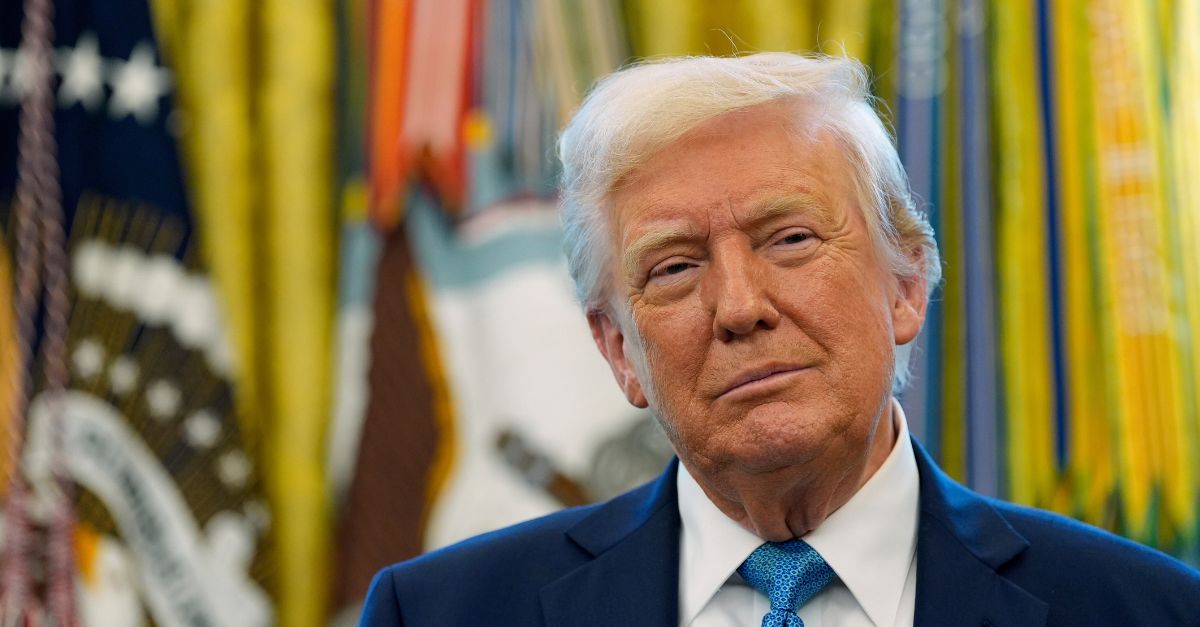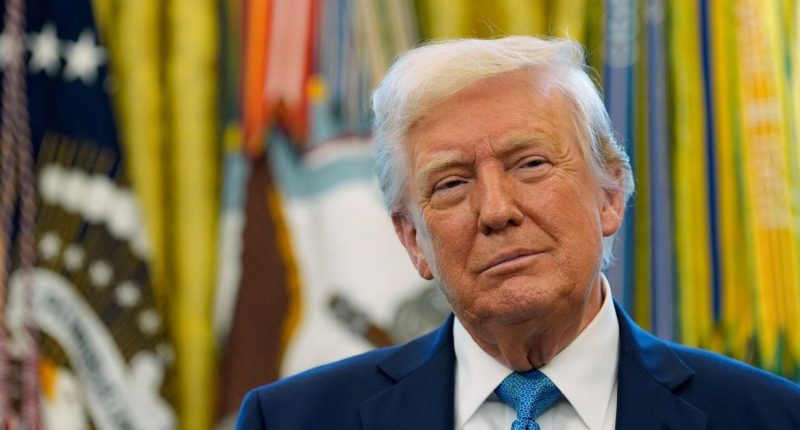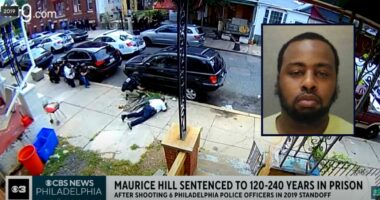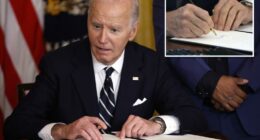
President Donald Trump watches as a ceremonial swearing in of Paul Atkins as chairman of the Securities and Exchange Commission, in the Oval Office of the White House, Tuesday, April 22, 2025, in Washington (AP Photo/Alex Brandon).
A federal judge in Maryland on Thursday expressed severe misgivings about the Trump administration‘s efforts to root out “diversity, equity, and inclusion” (DEI) initiatives, but insisted he had little power to change the current state of play in an ongoing legal battle.
In the underlying litigation, the National Association of Diversity Officers in Higher Education, a membership organization, won a late February injunction barring the new policies. This initial victory came when U.S. District Judge Adam B. Abelson, a Joe Biden appointee, found that the directives were both unconstitutionally vague and violative of the First Amendment’s free speech protections.
But the victory was short-lived.
On March 14, Chief Judge Albert Diaz of the 4th U.S. Circuit Court of Appeals, along with Circuit Judges Pamela Harris and Allison Rushing, granted the government’s request for a stay pending appeal.
Love true crime? Sign up for our newsletter, The Law&Crime Docket, to get the latest real-life crime stories delivered right to your inbox.
The plaintiffs, undeterred, then asked Abelson to vacate his original injunction, citing what the court termed “new factual developments.” This effort was in service of a bid for a new preliminary injunction.
“[T]hey believe that ‘evidence related to agencies’ interpretation and implementation of the Executive Orders’ would further support the likelihood of success on the merits of their already-asserted claims, and further that they ‘could amend their complaint to add new facial claims’ challenging the executive order provisions at issue,” the court explains. “The new ‘facial claims’ Plaintiffs state they may add in an amended complaint would be claims under the Administrative Procedures Act.”
Such an injunction would more or less reset the case – and force the Trump administration to spend several weeks requesting and litigating another stay. And, the plaintiffs argued, even the appellate panel that paused the first injunction would be amenable here.
From the plaintiff’s motion, at length:
The concurrences emphasized that their opinions spoke only to the record so far and that future developments might alter the outcome. In his concurrence, for example, Chief Judge Diaz noted he was satisfied “for now” that Defendants had met their stay burden, but explicitly “reserve[d] judgment on the extent to which the government relies on the Orders’ savings clause provisions as it enforces the Orders’ directives ” …
Similarly, in her concurrence, Judge Harris concluded “for now” that Defendants had met their burden, but offered the “caveat” that “[a]gency enforcement actions that go beyond the Orders’ narrow scope may well raise serious First Amendment and Due Process concerns, for the reasons cogently explained by” this Court.





